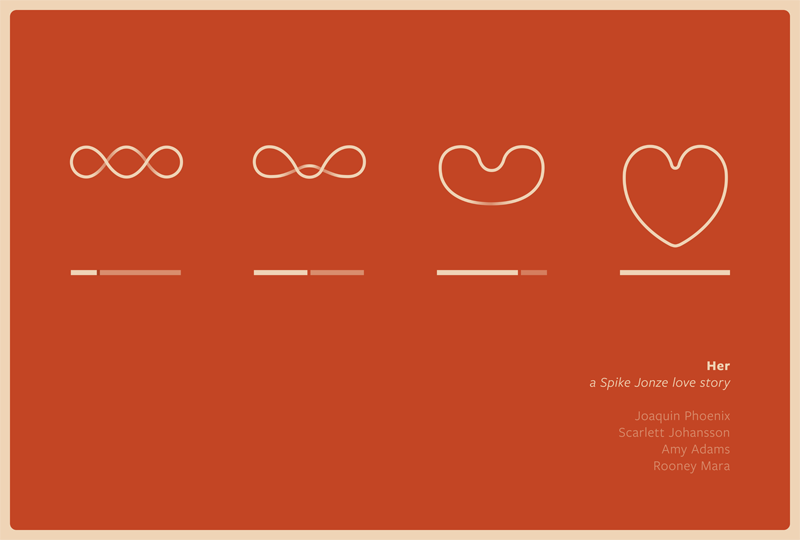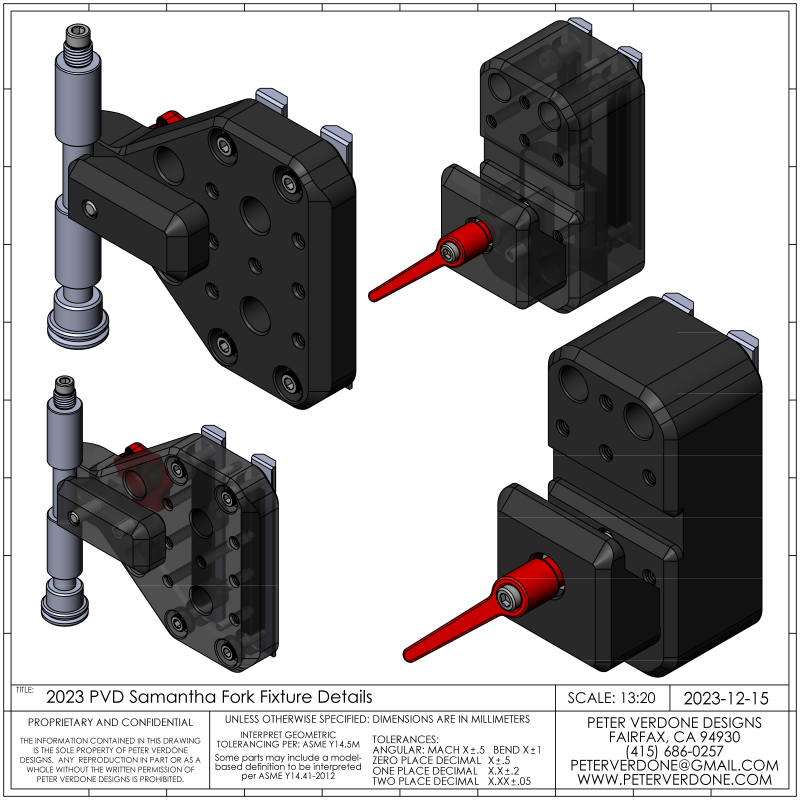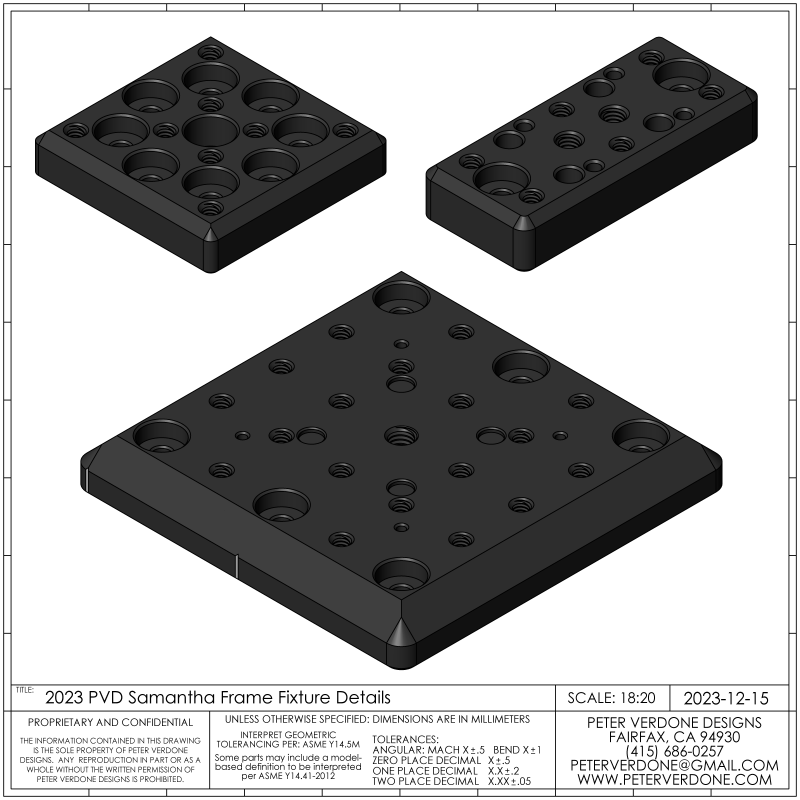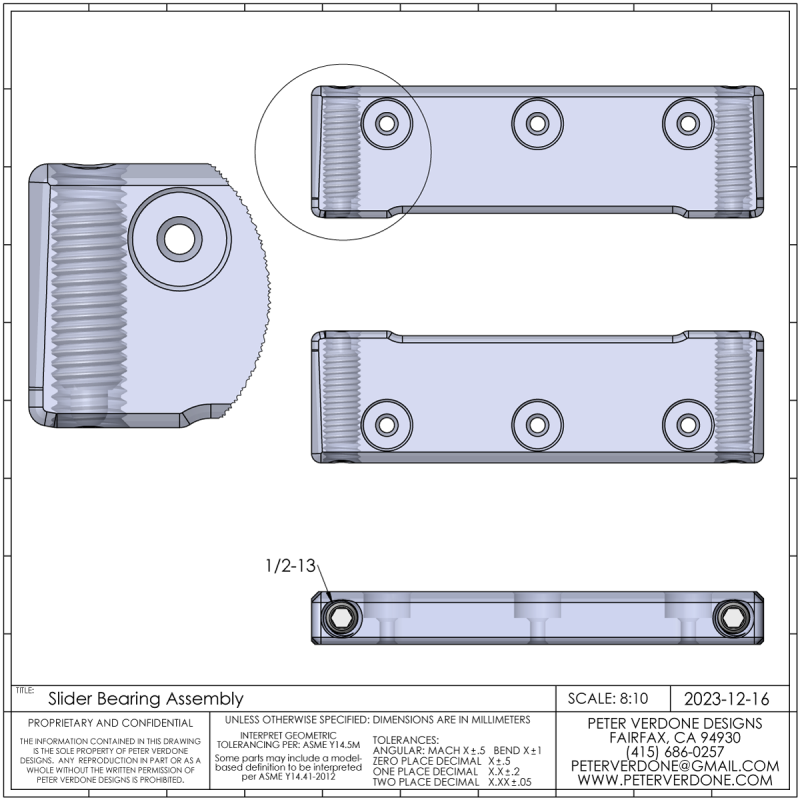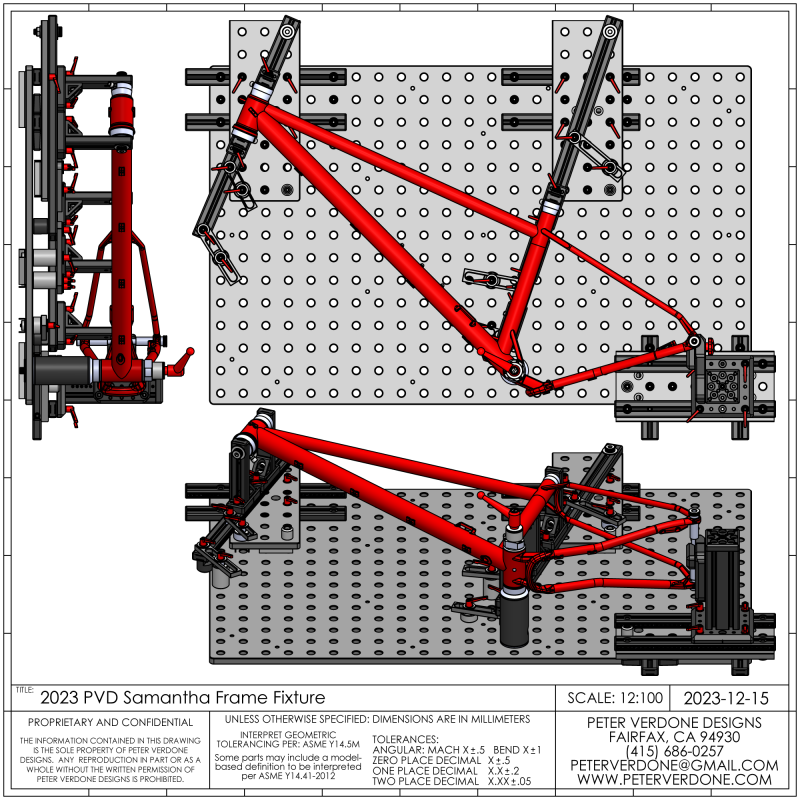Last week I posted here about the new bicycle frame fixture (Samantha) that I’ve been designing and am hoping to produce. I mentioned that I was wanting to produce a fork fixture that fits in with the rest of the ecosystem. Well, in the interest of economy and ensuring that any extended considerations of the system could be accounted for before I started cutting metal, I took a few days to get the fork fixture worked out.
I don’t believe that this is the only or necessarily the best way of doing a fork fixture in the ecosystem that I designed. What it does do is leverage several similar parts and takes advantage of previously designed sub assemblies. Because of this, I’m going to gamble on throwing some more parts in with the order to test this.
Theoretically, this fixture will produce a fork of any length or offset imagined within the confines of a table or gang of tables. There is one detail that I have yet to account for; the specific blade angle, blade cant, and planar alignment is left to other devises. The planarity of the blades is simple enough to set with a square or table block. The blade can cant angle is a little more pesky and might just be left to a sine bar construction and spacers. That is, of course, if that’s really critical. Most additive parts will already have provisions to hold this though. My designs leave little room for deviation of the blades from the printed parts.
A big hang-up in the design for the fork fixture was the steerer tube holder. I’ve been using the Anvil fork fixture for the last 17 years. Generally, it’s perfectly fine to use. The big problem that I’ve always had with it was the gigantic vice-grip style clamp that was used for holding the steerer in place. It made everything so cumbersome when moving, using, and storing the tool. I was hoping to come up with something far more elegant that still fit into the ecosystem.
Since the steerer holding block needed to be fairly tall to integrate into the system, I took advantage of making a cavity into the lower side to design a sliding nut for the clamp. Now, gravity will hold the system open when loose, a pin keeps the clamp aligned during it’s throw, and there is very little projection in the steerer area for it to function. I believe that the added cost of doing this is worth it in the long run. The cost of a great tool is lost to time while it’s greatness is proven every day.
My expectations that I needed to produce this design on the front side of fixture production was well founded. I discovered a large amount of small details throughout the design that could see improvement. Most of these weren’t for the basic functionality of the system but how well the various parts could be re-purposed for other uses. Chief among these was fully populating the several parts with 5/8″ pin bores and 1/4-20 threads on an optical raster. This will add a little cost to production but if it saves the day at some unknown time, I got the value.
More notable changes in the rest of the frame fixture. I decided to change the slider bearing preload system again. Since 1/2-13 is such a useful thread with it’s ability to use a range of solid threaded inserts, I stepped that up in the devise. This gives me a lot more room to work with for the native thread. Now, a long through spring plunger (McMaster 8495A522) can be specified with a much meatier contact pin. This makes initial assembly simple and leaves a lot more room for optional changes in the future.
The tolerance for the block faces that might contact the 8020 rail was also changed. Now, the parts are cut to a theoretical gap size of 1.500″ instead of slightly wider. While this wouldn’t be wise in most situations, here the tolerance stacking on the looser side of the pins and bores that are connecting the blocks will open up a little space. More, as I shim for improved fits, the system will only close in on the theoretical size, not go under. Kinda neat.
I’m now getting to the crossroad for this project. I’ve got another week or two to allow for my choices to stew, think of anything else, and avoid issue. Then it will be time to put some cash down. Should I order parts just for myself, offer sets, or an à la carte buy in for specific components? These would be for ‘prototype’ grade parts that haven’t gotten confirmed in real life but I’m sure that they’ll end up fine for use. I’m always hesitant to deal with the public for stuff like this but I can see it doing some good for others, much like the 2017 seat tube order.

